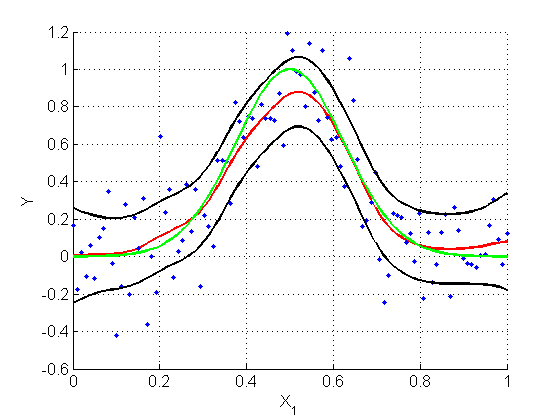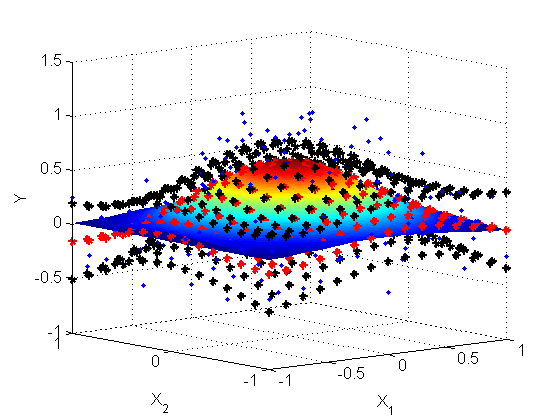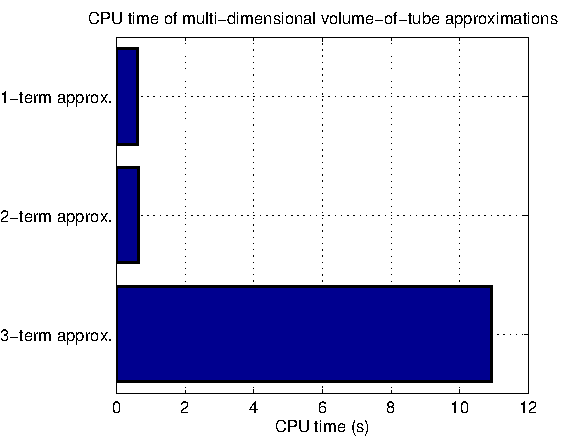Introduction
NPRLab is a MATLAB toolbox for nonparametric regression. In particular, it implements a variety of "linear estimators". A linear estimator $r_n(x)$ can be written as $$r_n(x) = ∑↙{i=1}↖nl_i(x)Y_i,$$ for each $x$. Defining the vectors $r = (r_n(x_1),...,r_n(x_n))^T$ and $Y = (Y_1,...,Y_n)^T$, one can write these as a matrix-vector product: $$r = LY,$$ with $L$ the smoother matrix and $L_{ij} = l_j(x_i)$.
NPRLab is built around and requires the LS-SVMlab toolbox to work. The following linear estimators are currently implemented:
- Nadaraya-Watson,
- Local polynomial regression,
- Priestley-Chao,
- Least Squares Support Vector Machines (through the LS-SVMlab toolbox).
Moreover, other linear estimators can easily be added to the toolbox. Data rescaling and bandwidth tuning is done automatically by the software. Bandwidth tuning is done using (i) leave-one-out cross-validation, (ii) generalized cross-validation or (iii) Akaike information criterium corrected (AICC). Finally, the toolbox also features confidence interval estimation by the volume-of-tube formula both in a one-dimensional and multi-dimensional setting (see Sun, J., and Loader, C. R. (1994). Simultaneous confidence bands for linear regression and smoothing. The Annals of Statistics, 1328-1345.). The computation of the multi-dimensional volume-of-tube formula uses multiple cores of the CPU if the Parallel Computing toolbox is installed. The toolbox includes a number of examples that demonstrate the usage.



